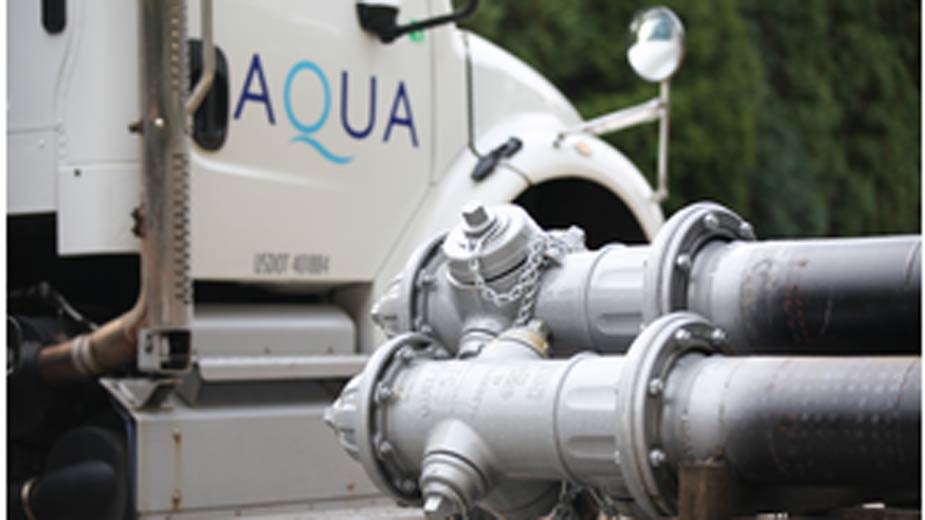Aqua Ohio Says $50M Offer Is Starting Point
YOUNGSTOWN, Ohio – Officials with Aqua Ohio said Tuesday they don’t yet know how much might be spent on upgrades or how water rates might change if they are successful in buying the assets of the city of Youngstown’s water distribution system.
The water utility’s representatives also said they view last week’s $50 million offer to buy the city’s water system assets as a starting point for discussions with the city’s incoming administration and City Council. The Ohio subsidiary of Aqua America submitted a letter of interest Friday to Mayor John McNally, who leaves office at the end of 2017. Democrat Jamael Tito Brown was declared the winner of the November election, but independent candidate Sean McKinney is mounting a challenge based on allegation of voter fraud.
Regardless of who the mayor is, getting a deal in place with the city would likely take about a year, said Ed Kolodziej, Aqua Ohio president.
“Once we start talking, it can be a rather detailed conversation,” Kolodziej said. Via phone, he joined a meeting with Anthony Mancari, director of development for Aqua Ohio; Jennifer Johnson, area manager for Aqua Ohio’s Struthers Division; and spokesman Jeff La Rue.
“This offer is intended to just start the dialogue and offer the city leaders – whether that’s the new administration, the city council or others in the community – inspiration and options as they look to address the many challenges that they themselves have outlined,” La Rue said. “We believe that working in partnership, in concert with those folks really does present a myriad of potential benefits to the whole community.”
Those challenges include a projected city budget deficit between $2.5 million and $3 million that has some in the city discussing buyouts or layoffs.
Aqua Ohio officials have pledged to spend $5 million to $7 million annually – potentially more – to upgrade the city’s aging water infrastructure, Mancari said. Though Aqua Ohio did not have a specific total for how much the Youngstown system might require in upgrades, the American Society of Civil Engineers projects that Ohio and its communities need to spend $12 billion on their water systems and another $14 billion on their wastewater systems across the state, La Rue said.
“That’s just to bring their systems up to snuff, and right now there is no $26 billion pool of money to fund that,” he added. “We have the ability to reach out to our shareholders to help relieve some of that need statewide, and specifically we think this is a good area where we could start to tackle that.”
Because Aqua Ohio is in the early stages of its discussions with the city – the officials acknowledged that the incoming mayor might have other issues that need to be addressed more immediately after he takes office, but hoped to be able to meet with him early next year – they could not say how a sale might impact rates for city water customers.
“It’s an important question and we’re always sensitive to any rate impact to our customers,” Mancari said.
He anticipated sitting down with city leaders to examine potential efficiencies, “recognizing that there is a tremendous amount of capital investment that is going to need to be put into the system, and ultimately any rate adjustments are tied to the level of capital investment that is brought into there.”
The Struthers division, which serves 20,000 customers, will unveil its new $2.5 million operations center today at Castlo Industrial Park.
“The need for Struthers to have a facility to continue the services to the thousands we serve has been coming for a while,” Johnson said. She characterized the Struthers expansion as separate from the decision to pursue the assets of the Youngstown system.
Though some resources might be brought in from Aqua Ohio’s Boardman headquarters to capitalize on existing efficiencies, the Youngstown system likely would rely on the existing physical assets in the city, she noted.
Kolodziej characterized the new Struthers building and the planned reconstruction of the division’s treatment building as “a sterling example” of the utility’s ability to work with community leadership to determine what needed to be done “to position that piece of the valley for the next 20- to 30 years” and to address the impact on rates, he said. “It’s a great example of what could be done in other municipalities, including Youngstown,” he said.
Copyright 2024 The Business Journal, Youngstown, Ohio.



